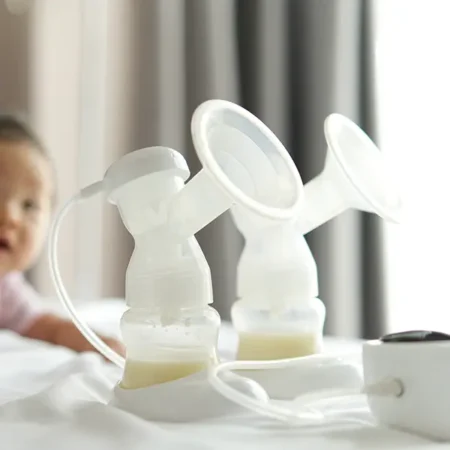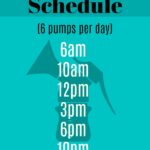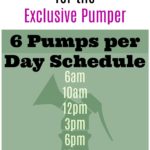When you’re exclusively pumping, it’s important to make and stick to a pumping schedule in order to maximize your milk supply and minimize issues like clogged ducts. Here are some sample pumping schedules that you can tweak to fit your life.
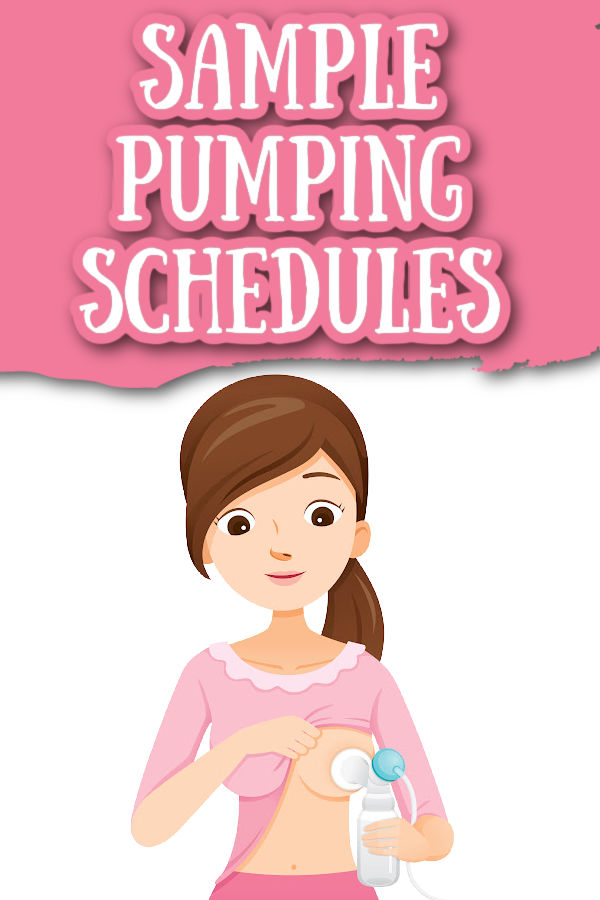
This post may contain affiliate links, which means that if you click through and make a purchase, I’ll be compensated at no additional cost to you. I only recommend products I love! More info here.
(Not an exclusive pumper? These posts on pumping schedules at work or combining nursing and pumping might be helpful for you instead.)
Before I give you some sample exclusive pumping schedule, here’s what to consider when putting yours together.
How often should you pump when you are exclusively pumping?
This depends on a few different things:
- Your baby’s age. When you have a newborn, you may be pumping as frequently as every 2 to 3 hours; as your baby gets older, you may not need to pump as often.
- How long you plan to pump. Pumping more may help protect your milk supply long-term, so you may want to be more conservative when dropping sessions if you plan to pump for a year or more.
- Your milk supply. Pumping more frequently may be beneficial to milk supply.
If you have a newborn baby, aim for seven to ten pumping sessions per day.
Then, after the newborn phase, you may be able drop some pumping sessions. (You will be able to see examples of how often I pumped at different ages in the sample schedules below.)
How long should you pump?
Most exclusive pumpers should aim for a minimum of 120 minutes pumping per day, unless they are weaning.
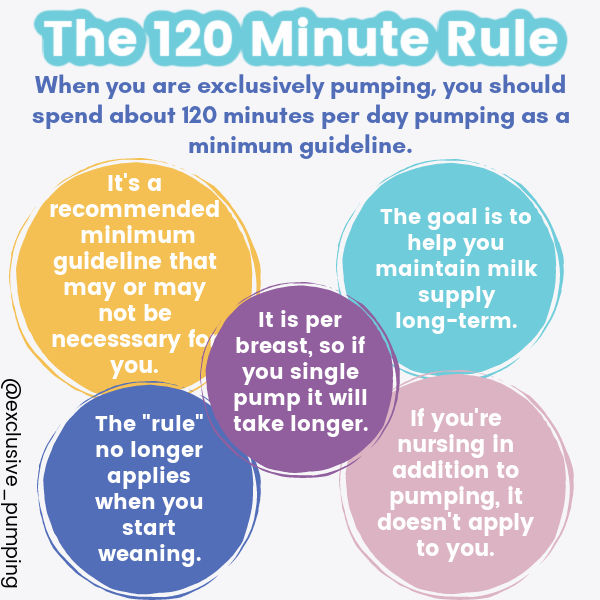
So just divide 120 by the number of pumping sessions you have, and set that as your goal.
Note: Some people prefer to pump for more than 120 minutes per day, and that’s fine. Also, some people find they are able to maintain their milk supply long-term pumping less than 120 minutes. Everyone is different, so just take this into account as a general guideline, and go from there.
If you find that you still have a lot of milk in your breasts when your pumping time is up, here are some things that might help you pump faster.
How long of a break should you have between pumping sessions at night?
Pumping in the middle of the night can be important for establishing your milk supply, especially when your baby is a newborn.
In the newborn stage, I would aim for one or two sessions at night.
I did two from birth to about eight weeks, then transitioned to one from 8-12 weeks. Then at 12 weeks, I went back to work and stopped pumping at night.
(More info on dropping middle of the night pumping sessions here.)
What type of pumping schedule should you have?

There are a few different ways you can structure your exclusive pumping schedule:
- A set schedule where you pump at the same time every day
- An “every x hours” schedule, where you mark your next time pumping from your last pump time
- A schedule where you pump whenever baby eats
Different set-ups might work for you at different times in your pumping journey.
I found that a schedule of pumping when baby ate was easiest for me in the newborn phase, when life was so unpredictable, but a set schedule was better once I’d gone back to work.
This article contains examples of set pumping schedules, but any of these ways of doing it are fine as long you get the sessions and pumping time in! Do whatever works best for you.
Sample pumping schedules with a newborn
I usually recommend aiming for eight or nine pumping sessions in this stage, with seven as the lower limit and ten as the upper limit (as noted above).
With less than seven sessions, it may be difficult to establish your milk supply. With more than ten, you may get overwhelmed and burn out. However, these are just guidelines to keep in mind – everyone is different.
Below is a sample pumping schedule with eight pumping sessions in 24 hours:
7am, 10am, 12pm, 3pm, 6pm, 9pm, 12am, 4am
A schedule like this will give you three and a half straight hours of sleep (from about 12:30am-4am, once you’ve finished pumping). These times can obviously be adjusted however you like.
Below is a sample pumping schedule with ten sessions in 24 hours:
7am, 9am, 11am, 1pm, 3pm, 5pm, 7pm, 12am, 3am, 5am
This schedule will give you four and a half straight hours of sleep (from 7:30pm-12am), with the added benefit that if you have a partner he or she can care for the baby during this time before going to bed themselves.
(More information about how often and how long to pump for a newborn here.)
Sample pumping schedules with an older baby
Below are some sample pumping schedules for older babies. These aren’t rocket science, and you can adjust them to a schedule that fits your needs; I’m just including them as an example of worked for me as my baby got older.
(Note: As you drop pumping sessions, in order to maintain your milk supply, you should increase the amount of time that you pump in each session so that your total pumping time per day stays the same. Again, you may want to refer to the 120 minute rule.)
Six pumping sessions in 24 hours (I used this from 3-4 months):
6am, 10am, 12pm, 3pm, 6pm, 10pm
Five pumping sessions in 24 hours (I used this from 4-6 months):
6am, 9am, 12pm, 3pm, 10pm
Four pumping sessions in 24 hours (I used this from 6-11 months):
6am, 10am, 2pm, 10pm
Three pumping sessions in 24 hours (I used this from 11-12 months):
6am, 2pm, 10pm
Two pumping sessions in 24 hours (I used this from 12-14 months):
6am, 7pm
How important is sticking to a pumping schedule?
Sticking to a pumping schedule can be a challenge – as the parent of an infant, you are likely sleep deprived and busy, so it’s easy to forget to pump.
At the same time, if you frequently miss a pumping session, it could lead to decreased milk supply.
This is because breastfeeding supply (the amount of milk that you produce) is driven by demand (how much milk you remove). If you skip sessions frequently, you’ll be consistently removing less milk, thus decreasing demand.
Leaving milk in your breasts longer than usual can also sometimes result in a clogged duct or mastitis.
Therefore, it’s a good idea to try to stick to your schedule if you can. However, if you do need to miss a pumping session, you can try to do a make up session later than day or add the missed time to one of your later sessions.
(Want to download this information so you can refer back later? Sign up below and you’ll get an email with these sample pumping schedules in your inbox!)
Want help putting together the perfect pumping schedule for you that saves your sanity AND your milk supply? Check out the Exclusive Pumping Playbook! Includes cheat sheets for setting up systems and routines to make things easier. Use EPUMP30 for 30% off.
References- KidsHealth. “Breastfeeding FAQs: How Much and How Often?” https://kidshealth.org/en/parents/breastfeed-often.html
